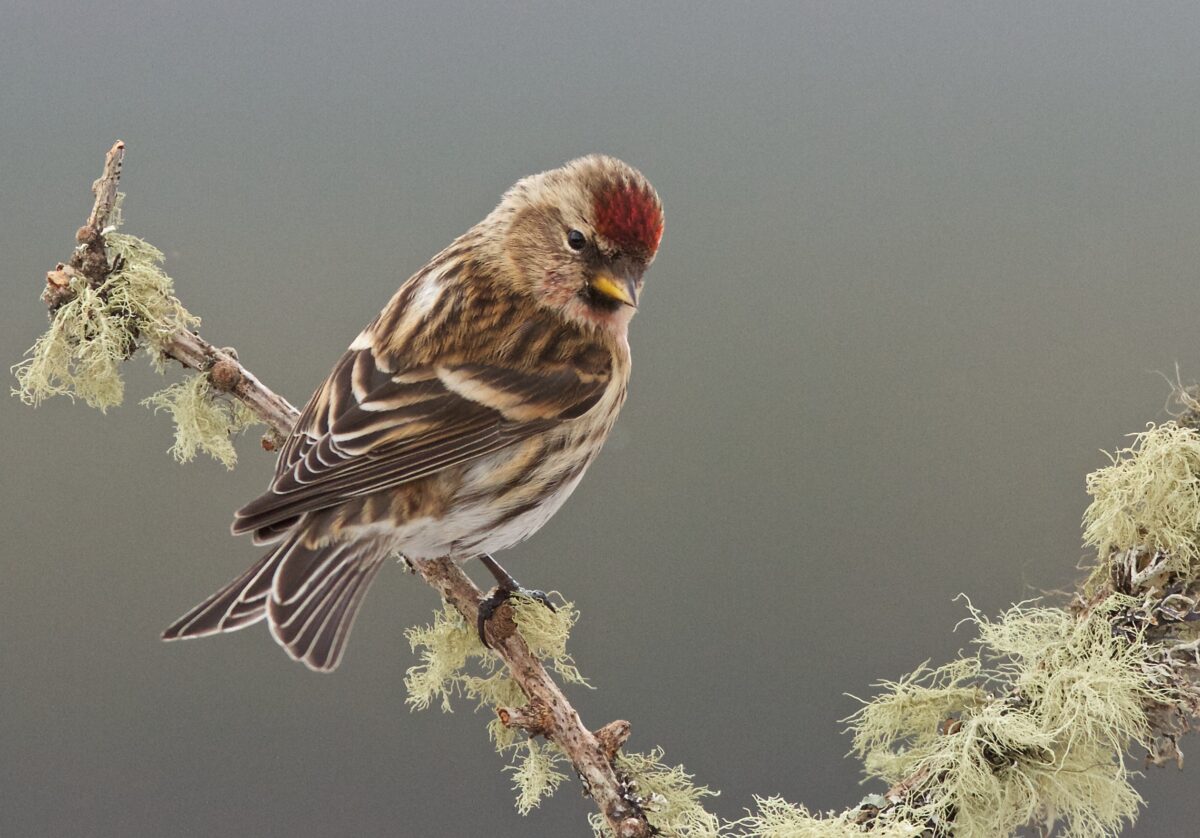Finches, in the family Fringillidae, are small to medium-sized birds, often having colourful plumage and short, triangular beaks, though this can vary depending on food preference. They’re found across the world, excluding Australia and the polar regions, and include more than 200 recorded species. The family Fringillidae is split into two subfamilies: Fringillinae and Carduelinae. In the UK, there are more than 15 finch species with breeding populations, along with several migrants and occasional visitors.
Hawfinch (Coccothraustes coccothraustes)
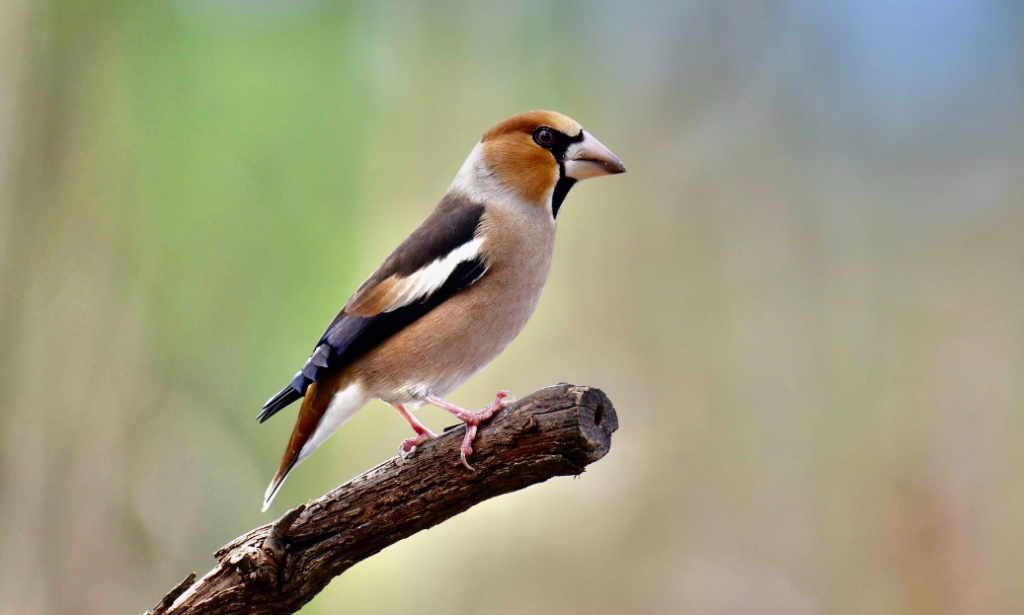
Distribution: Mainly found in southern England, with populations in the north and south of Wales as well as southern Scotland.
Habitat: Woodland, particularly forest canopies.
Size: Length: 18cm, Wingspan: 31cm
BoCC5 status: Red
What to look for: This is the largest finch in the UK, with a large head and thick beak. They are mainly a rusty brown colour, with a darker brown back and wings. Their white undertail, tail tip and wing bars are easy to see in flight. Their head is a warmer orange-brown and they have a grey band around their neck. The black border to the base of their beak stretches down the front of their throat and towards the eye. The prominence of these features can vary between individuals, with females usually paler than males.
Bullfinch (Pyrrhula pyrrhula)
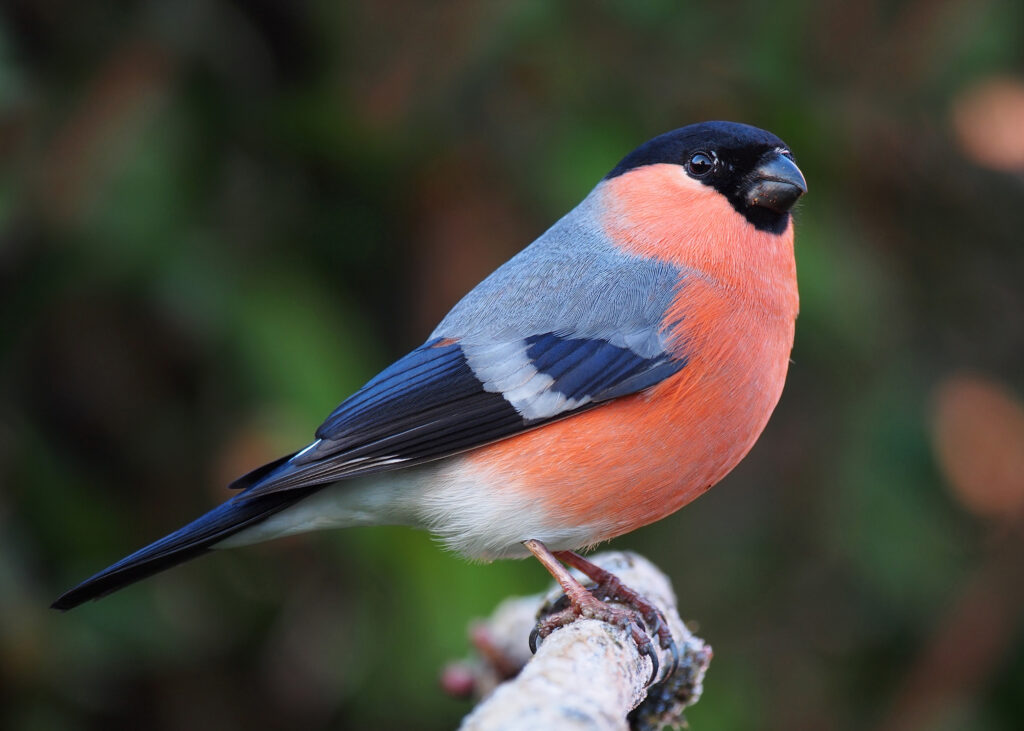
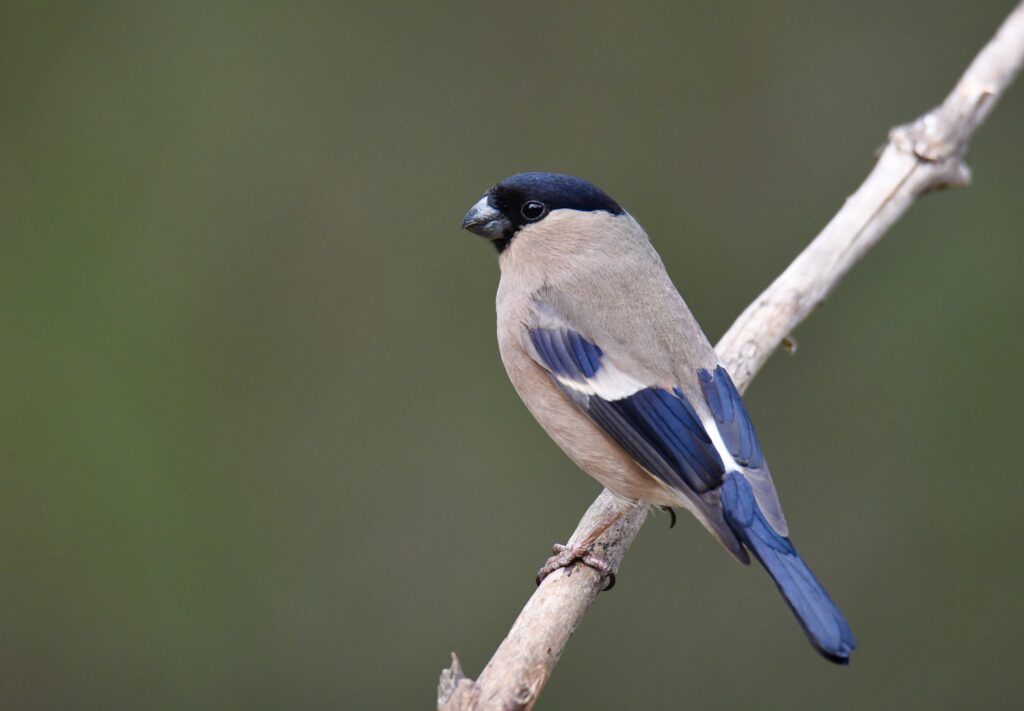
Distribution: Widely distributed across Britain and Ireland.
Habitat: Woodlands, orchards and hedgerows.
Size: Length: 14.5–16.5cm, Wingspan: 22–26cm
BoCC5 status: Amber
What to look for: A larger species of finch, the Bullfinch has a thick, black bill and distinct colouring. Males have a vibrant pink-orange breast, with a contrasting white rump, grey back, black cap and tail. Females are duller in colour, with a light reddish-brown breast and back.
Goldfinch (Carduelis carduelis)
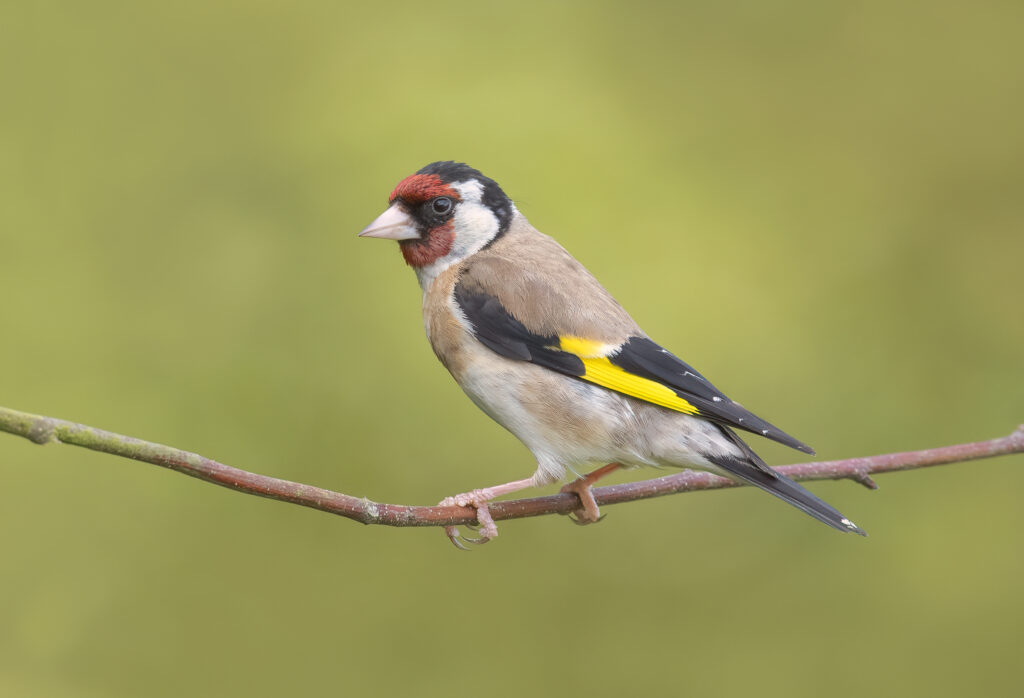
Distribution: Widespread throughout England and Wales, largely absent in upland areas such as northern Scotland
Habitat: Urban greenspaces, heathland and commons with seeding plants such as thistles, farmland, wetlands and woodland.
Size: Length: 12cm, Wingspan: 21–25.5cm
BoCC5 status: Green
What to look for: A recognisable and colourful finch, the Goldfinch has a bright red face with white cheeks and a black crown. Its golden-brown back is framed with black wing edges and yellow wing patches. Both males and females look alike.
Greenfinch (Chloris chloris)
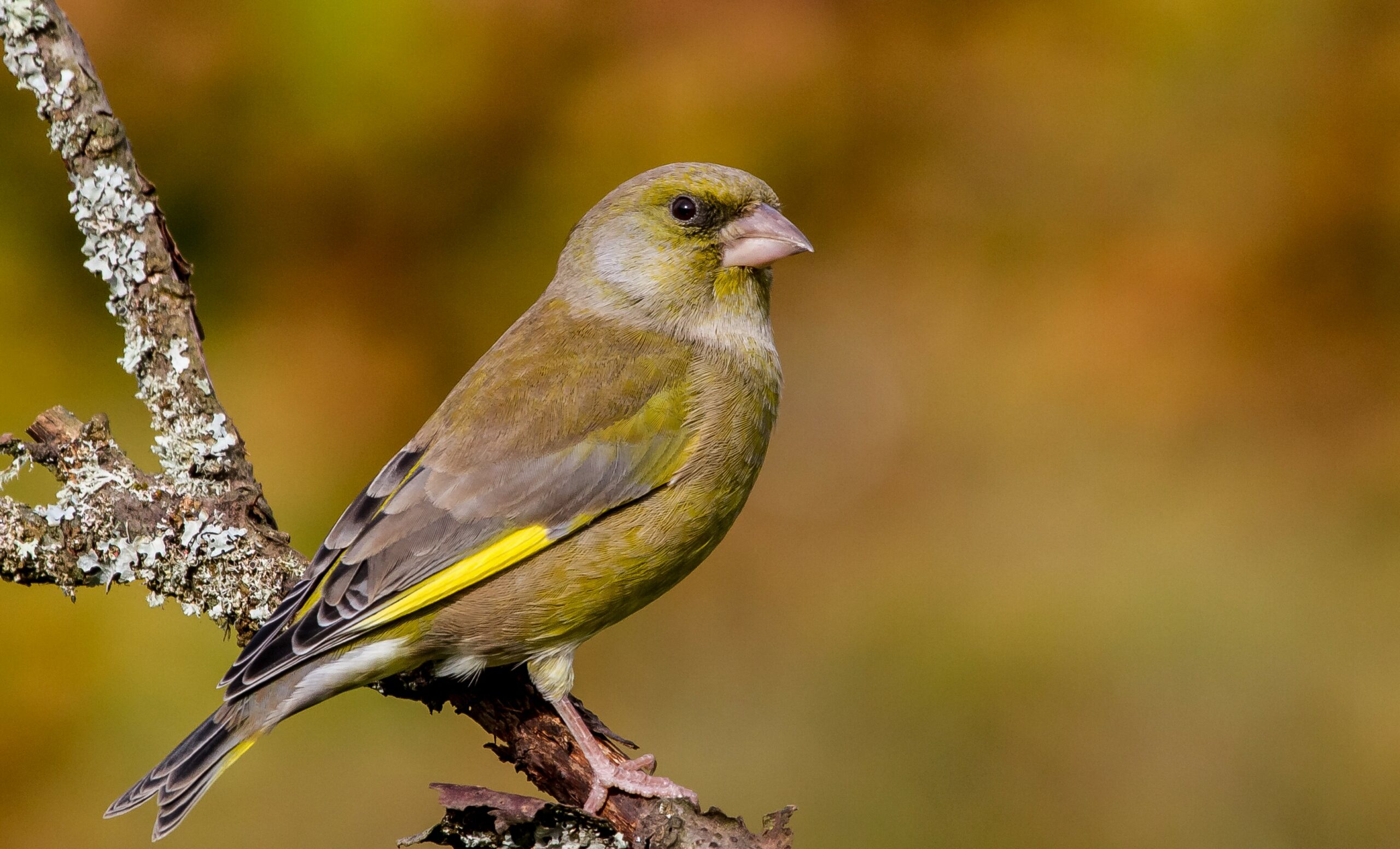
Distribution: Widespread, largely absent in upland areas such as northern Scotland
Habitat: Urban greenspaces, heathland and commons with seeding plants such as thistles, farmland, wetlands and woodland.
Size: Length: 15cm, Wingspan: 26cm
BoCC5 status: Red
What to look for: Adult Greenfinches are, as their name suggests, green, but their wings and tail are mostly grey with a bar of bright yellow. They have a grey patch on their cheeks and a pink bill and legs. They have two distinct calls: a long wheezing call and a more melodic call consisting of trills and fast whistles.
Chaffinch (Fringilla coelebs)
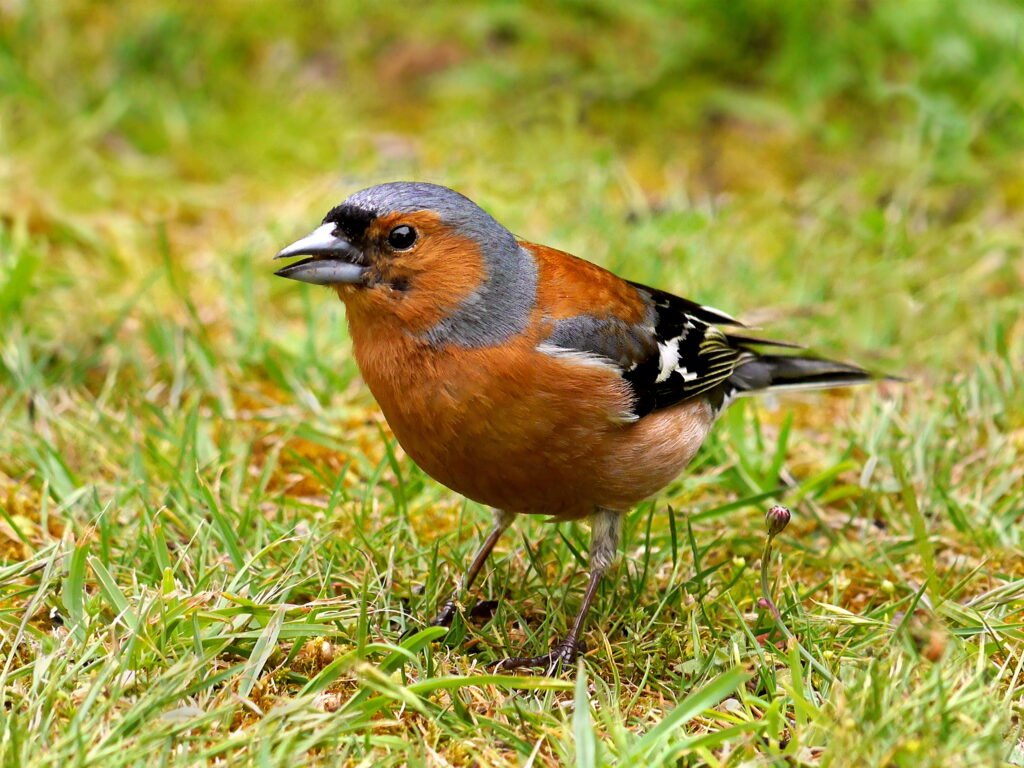
Distribution: Widespread.
Habitat: Woodlands, hedgerows, urban greenspaces, farmland and heathland.
Size: Length: 14.5cm, Wingspan: 24.5–28.5cm
BoCC5 status: Green
What to look for: One of the most common garden birds in the UK, the Chaffinch has a loud, distinctive song and colourful plumage. Males are memorable for their chestnut-orange breast and back, contrasted with a blue-grey crown and white shoulder patches. Females are less colourful, featuring a light brown breast and back.
Linnet (Linaria cannabina)
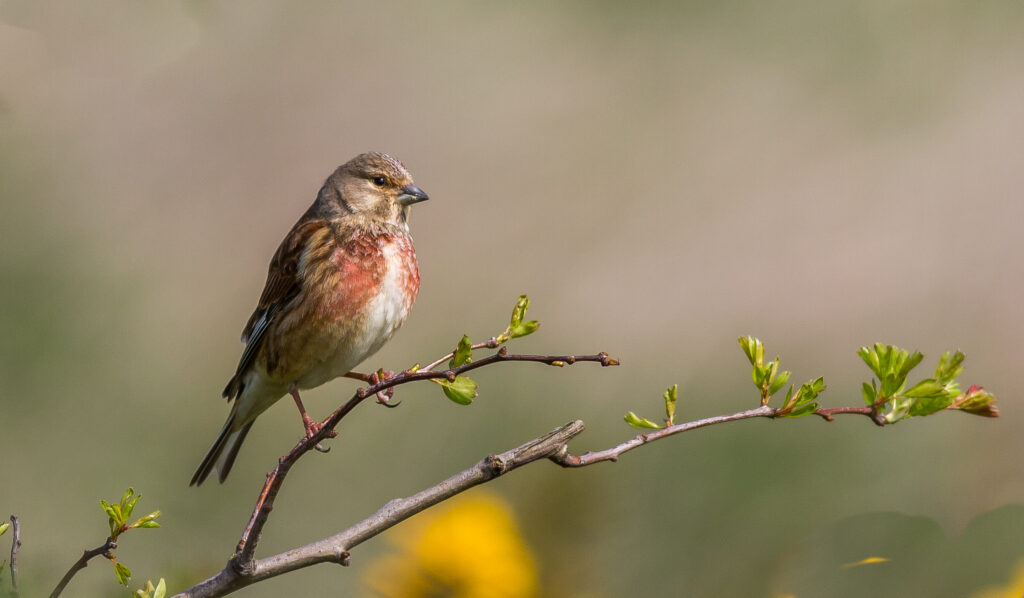
Distribution: Widespread in Britain and Ireland, absent from upland north Scotland.
Habitat: Commons, heathland, farmland, saltmarshes and urban greenspaces.
Size: Length: 13.5cm, Wingspan: 21–25.5cm
BoCC4 status: Red
What to look for: A smaller, slenderer finch, the Linnet is historically known for its melodic song. The male Linnet boasts a crimson forehead and chest, with a grey head and brown back. Females are paler in appearance and showcase the characteristic streaky brown hue of the species, though lacking reddish patches. Linnets may be found in large flocks during winter, often mixing with other seed-eating finches.
Siskin (Carduelis spinus)
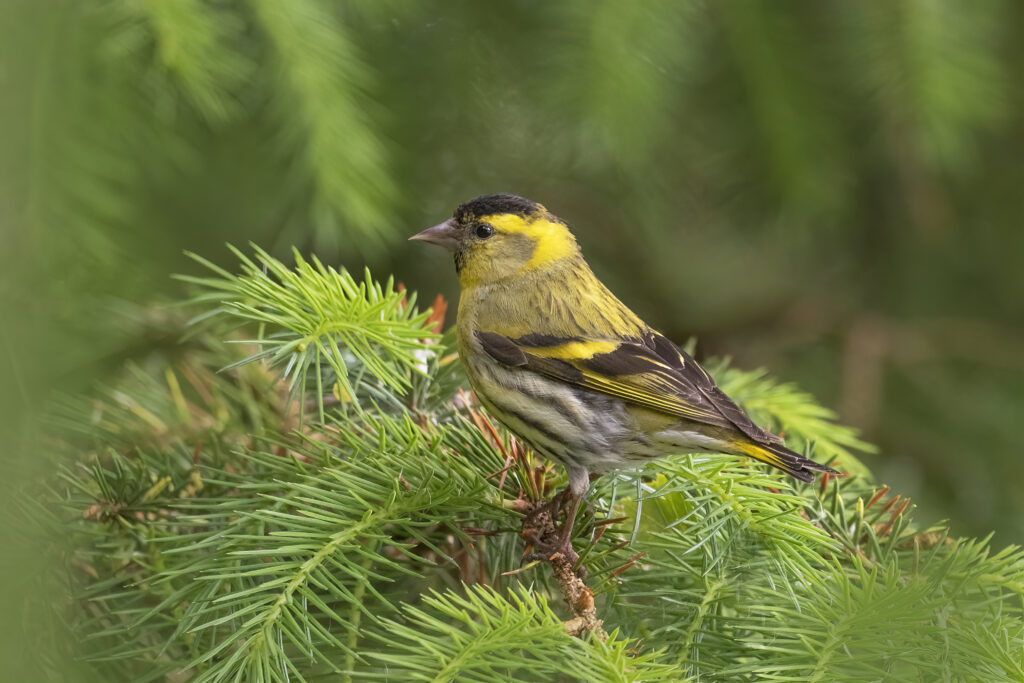
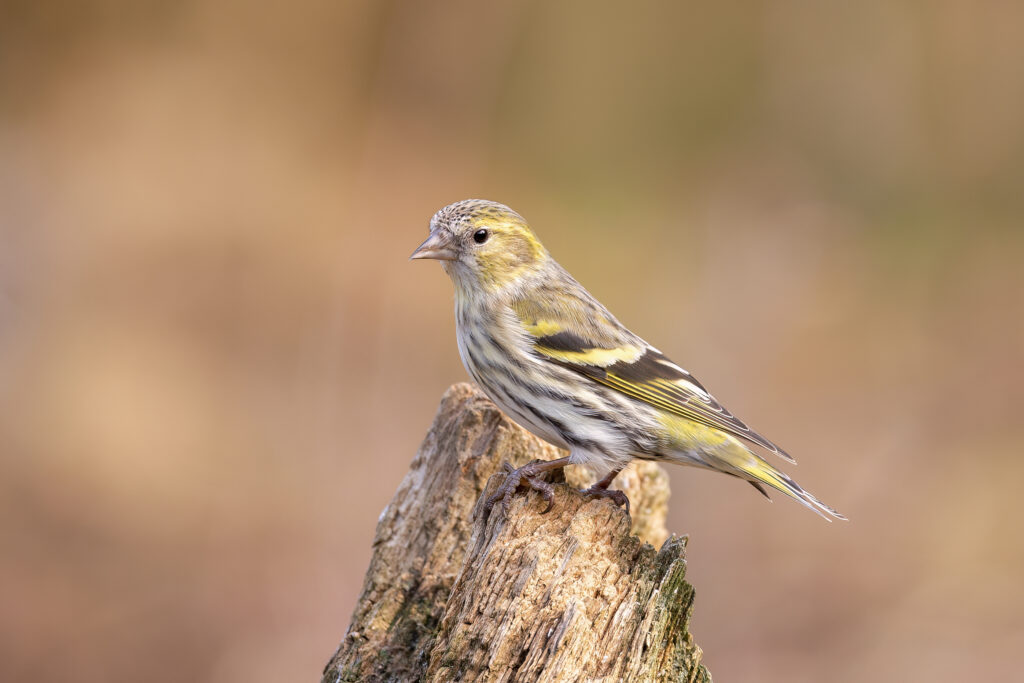
Distribution: Found across the UK, most abundant in Scotland and Wales.
Habitat: Tree tops in coniferous and mixed woodland, urban greenspaces.
Size: Length: 12cm, Wingspan: 20–23cm
BoCC5 status: Green
What to look for: A streaky green finch with a narrow bill, the Siskin is a resident breeder in the UK. Males have a distinct black crown and chin, with yellow cheeks and breast, and yellow streaks on black wings. Less colourful, females are a dull yellow on the head and back, with a streaky breast and underside. Both have a forked tail. Often found gathered in groups over winter with other finches.
Serin (Serinus serinus)
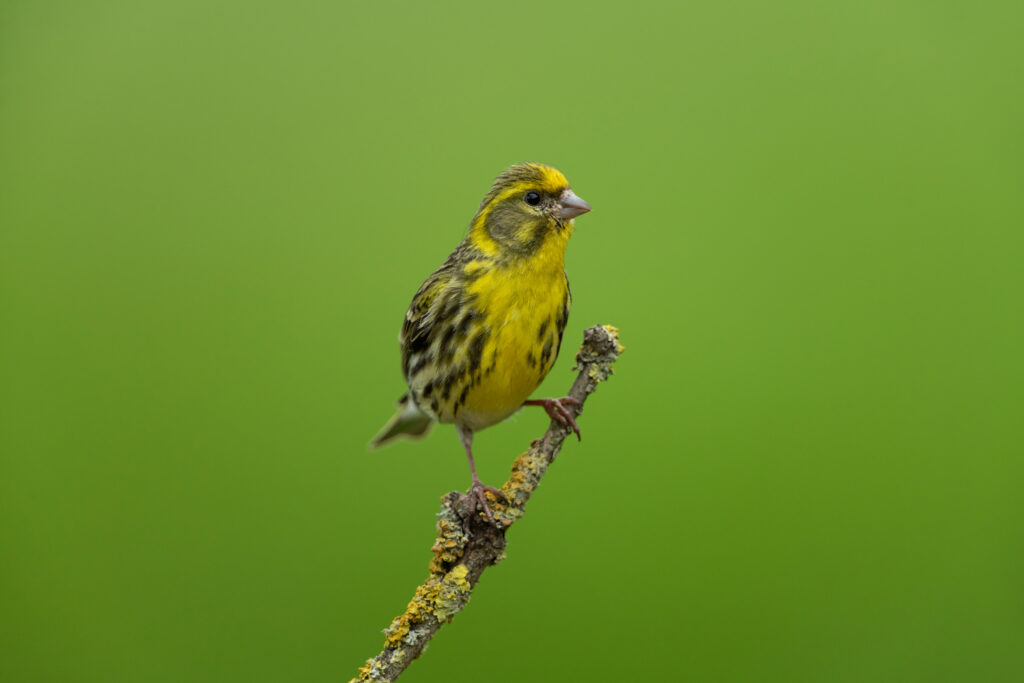
Distribution: An occasional visitor in southern England and the Channel Islands
Habitat: Coniferous woodland, farmland and urban greenspaces
Size: Length: 11–12cm, Wingspan: 18–20cm
BoCC5 status: Not assessed, former breeder
What to look for: A small, brown streaky finch with a stubby bill. Males feature a vibrant buttercup-yellow head and breast, with brown patches on the crown and cheeks. Females are less eye-catching, browner in colour with soft yellow hues. Both males and females have a forked tail and yellow streaks on brown wings.
Common Rosefinch (Carpodacus erythrinus)
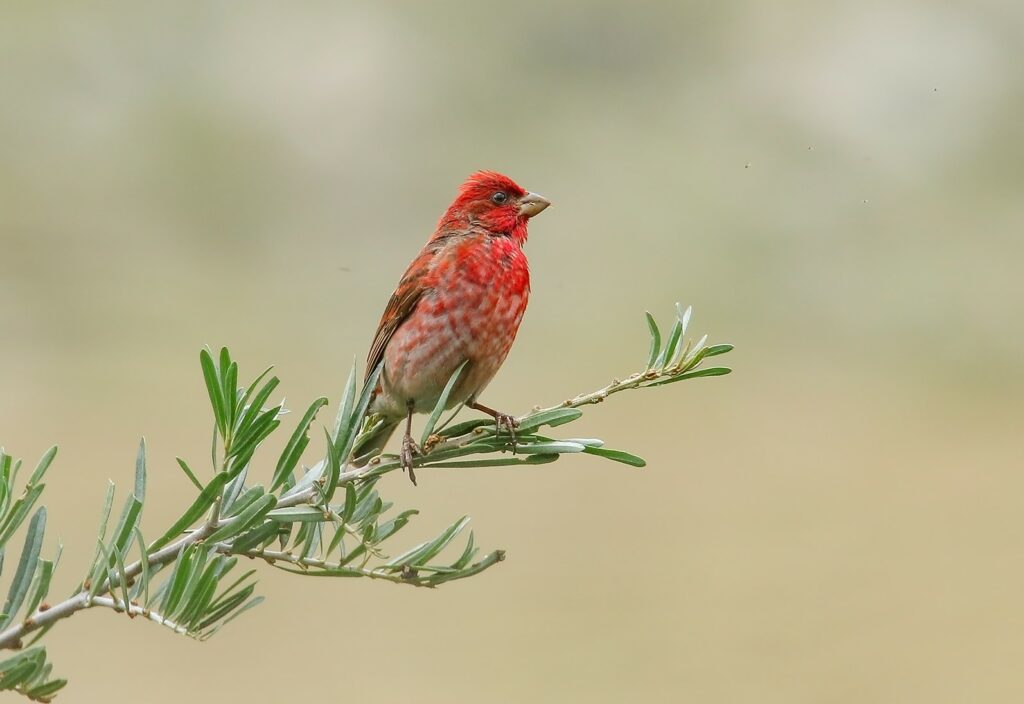
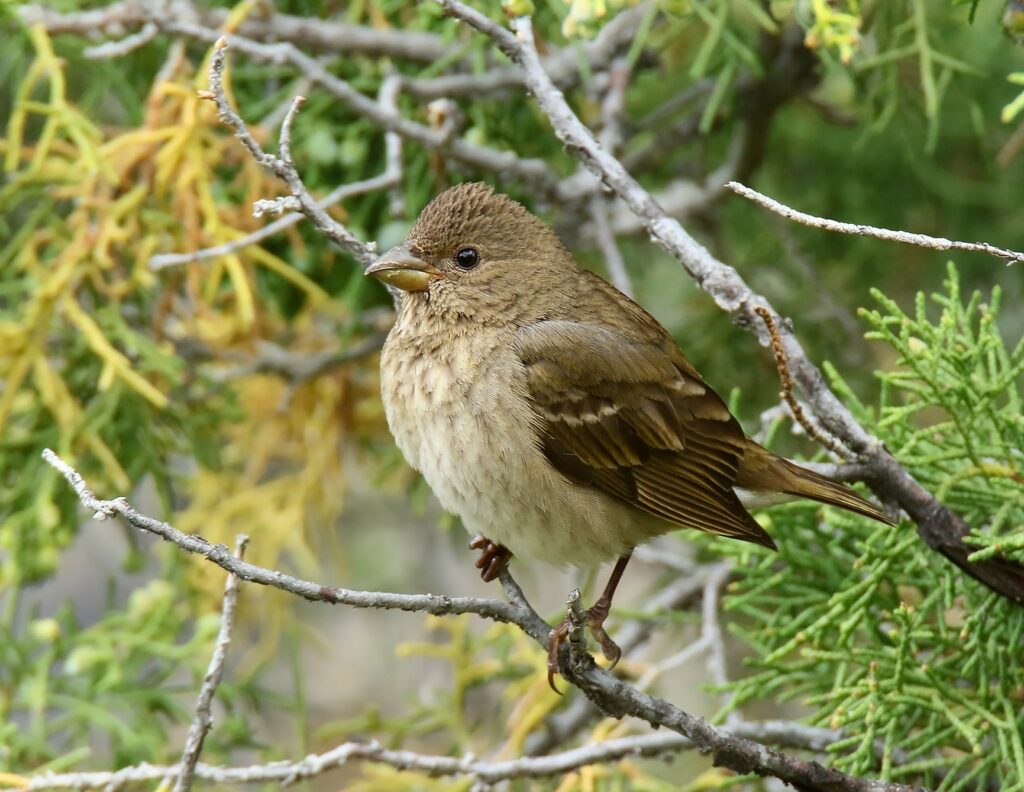
Distribution: A rare visitor, mainly observed in the northern Isles, east coast of Scotland and southern England.
Habitat: Woodland, scrubland and urban greenspaces.
Size: Length: 13.5–15cm
BoCC5 status: Not assessed
What to look for: Common Rosefinch are similar in size to a Chaffinch. Males have a striking scarlet head, breast and rump. The wings are a woody-brown, contrasted with a pale, whitish underside. Juveniles and adult female Common Rosefinch have a lightly streaked olive-brown plumage and a short beak. Juveniles are mostly observed in autumn during migration, and adult males may be seen in spring.
Common Crossbill (Loxia curvirostra) and Parrot Crossbill (Loxia pytyopsittacus)
Common Crossbill:
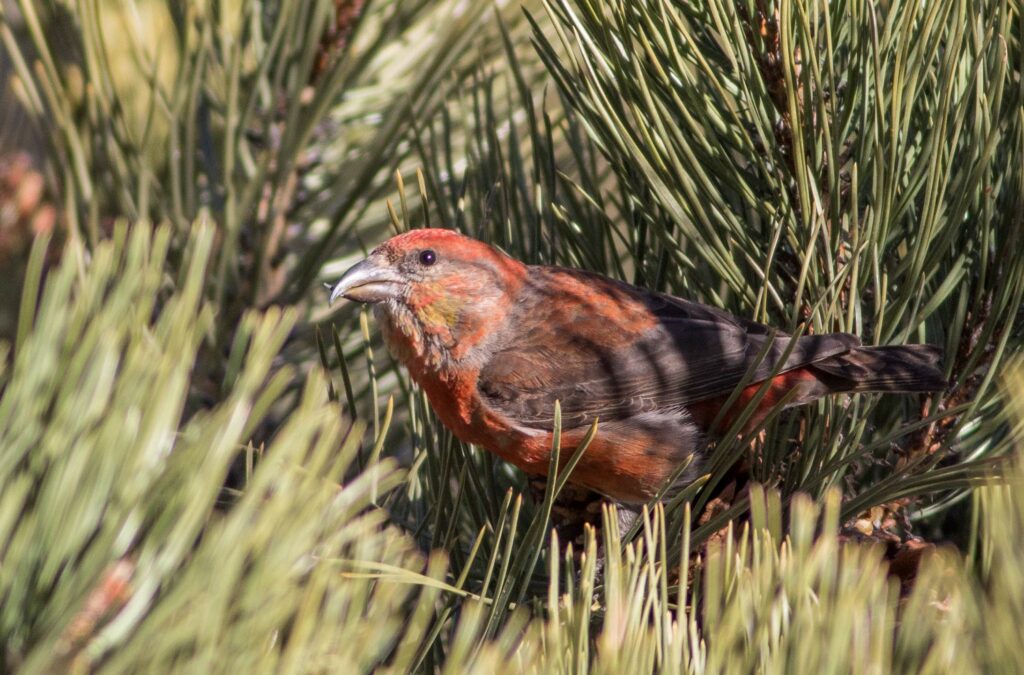
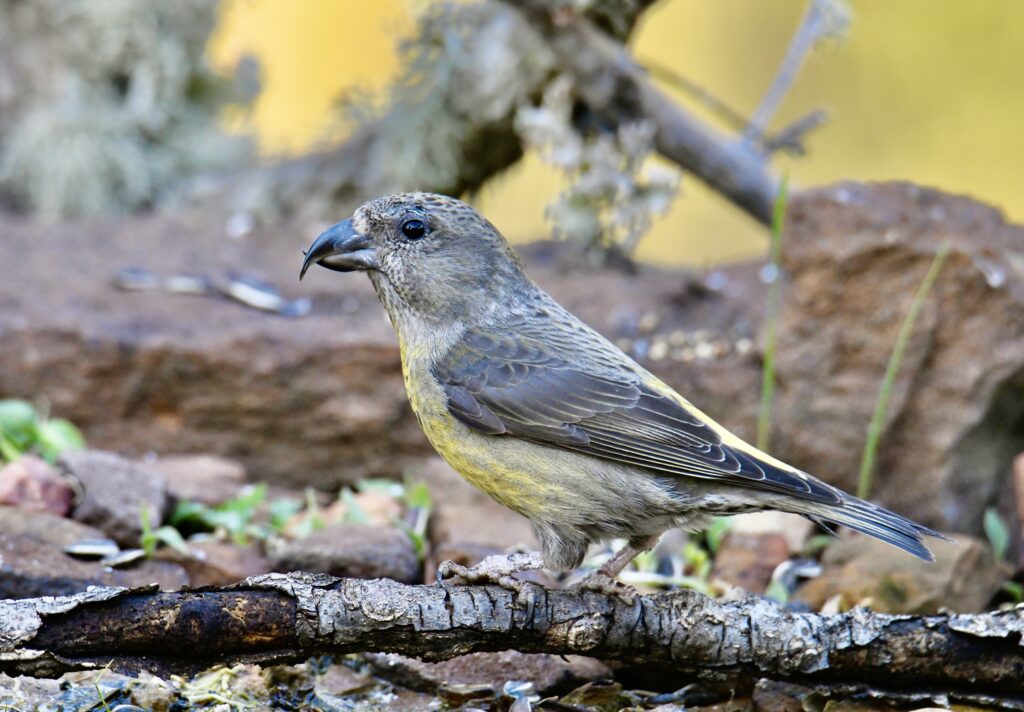
Parrot Crossbill: Female (left) by Tero Laakso via Flickr, Male (right) by Alan Shearman via Flickr
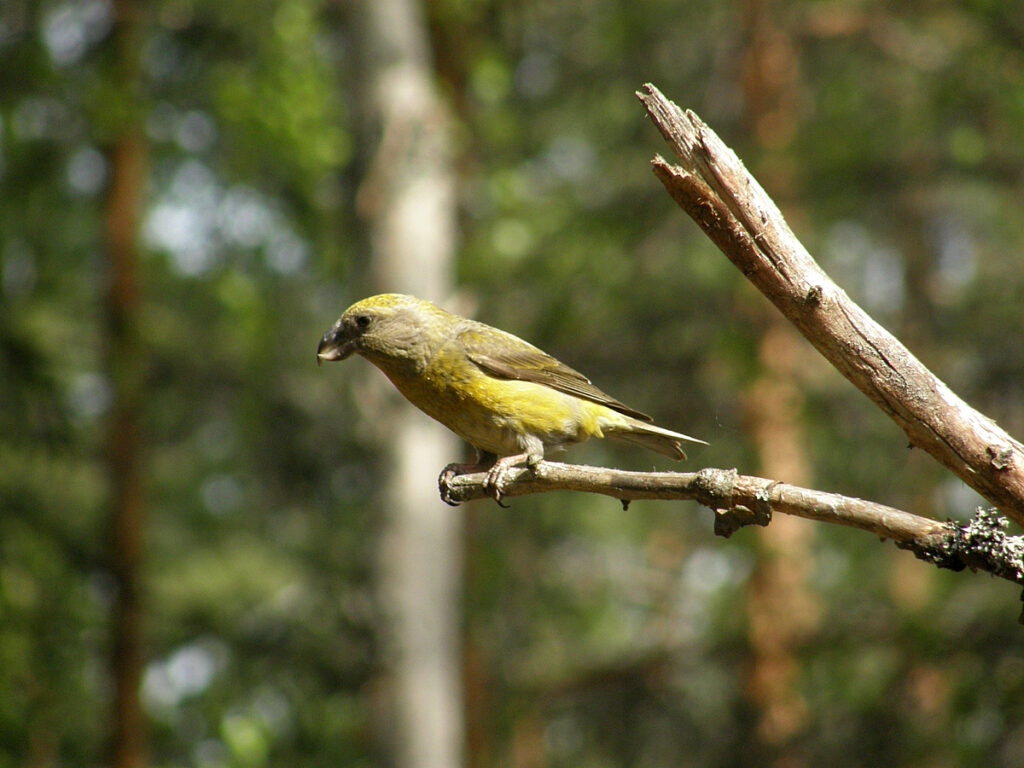
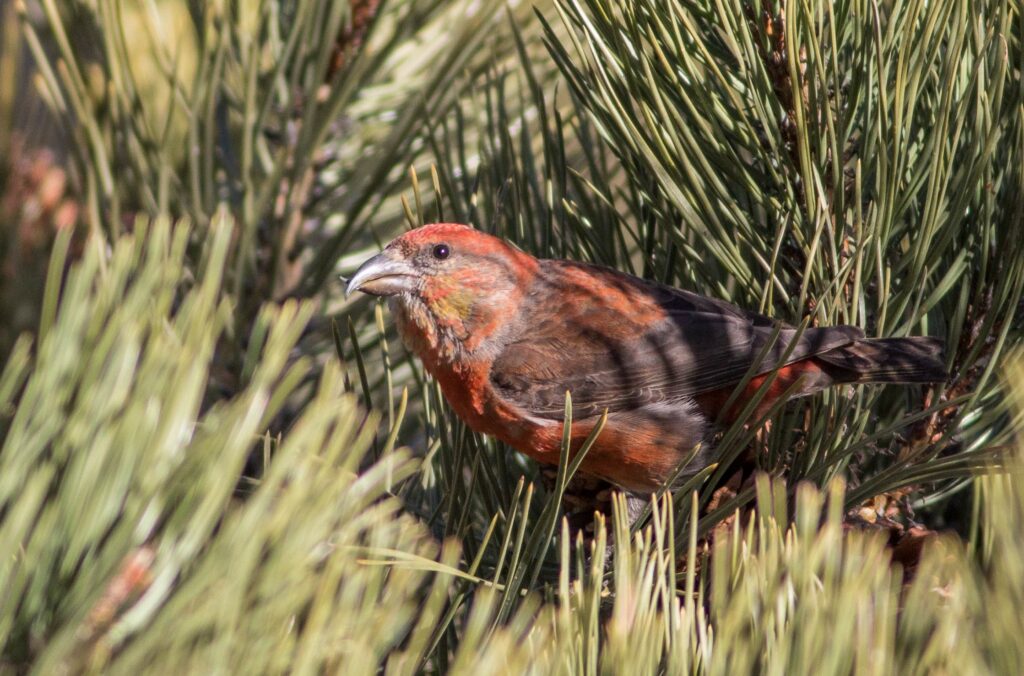
Distribution: Common Crossbill: widespread throughout Britain and Ireland. Parrot Crossbill: rare resident in Caledonian pinewoods of north-eastern Scotland.
Habitat: Coniferous woodland.
Size: Common Crossbill: Length: 16cm, Wingspan: 29cm. Parrot Crossbill: Length: 16–18cm, Wingspan: 30–34cm
BoCC5 status: Common Crossbill: Green, Parrot Crossbill: Amber
What to look for: Common Crossbill: Named for their distinctive crossed beak, the Common Crossbill is a large finch with a forked tail and colourful plumage. Showcasing a vibrant, brick-red head, breast and underside, a male Common Crossbill is easily distinguished from its female counterpart. Instead of the characteristic vibrant plumage, females have an olive-green colour on the head, breast and belly, with a yellow rump and grey wings. Juveniles have a grey-brown streaky appearance. Parrot Crossbill: A slightly larger species, with a deeper, heavier bill, the Parrot Crossbill is difficult to distinguish from their common cousins. Males feature a similar, orange-red head and breast with muted grey wings and tail. Females also have olive-green plumage with the characteristic crossed bill.
Did you know? A close relative, the Scottish Crossbill (Loxia scotica), is endemic to the Caledonian pine woods of Scotland. They are the only bird to be found in these forests and nowhere else in the world.
Common Redpoll (Acanthis flammea) and Lesser Redpoll (Acanthis cabaret)
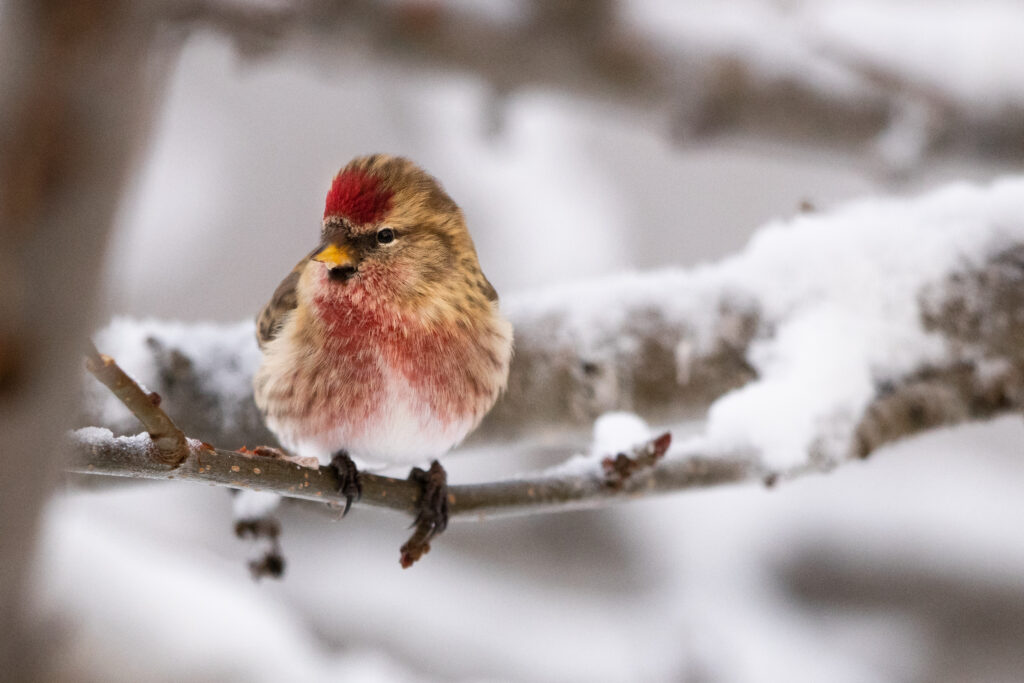
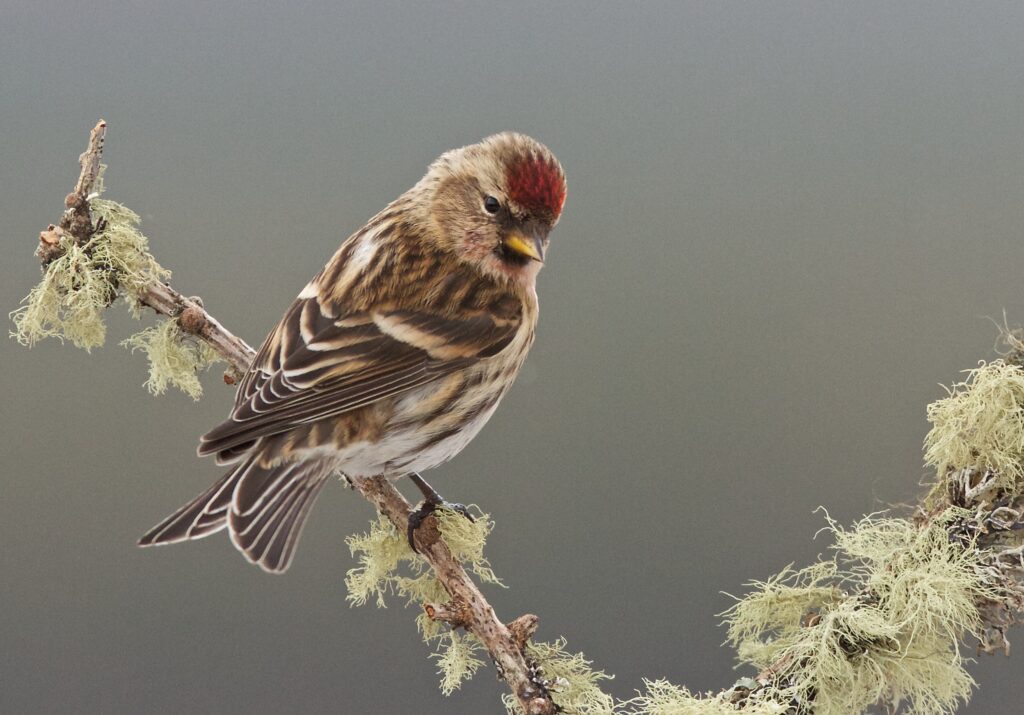
Distribution: Common Redpoll: Visitor to the UK in winter during migration, seen in eastern Scotland and England. Lesser Redpoll: Widespread.
Habitat: Birch, Larch or Alder woodland, urban greenspaces, farmland.
Size: Common Redpoll: Length: 12–14cm, Wingspan:20–25cm. Lesser Redpoll: Length: 12–13cm, Wingspan: 22cm
BoCC5 status: Common Redpoll: Red, Lesser Redpoll: Not Assessed.
What to look for: Common Redpoll: Paler than their vibrant cousins, Common Redpoll are streaky brown from above, with a pale white plumage from below. Displaying a vibrant red forehead and pink breast in summer, they are remarkably similar to their smaller cousins. Lesser Redpoll: Slightly smaller, Lesser Redpoll are a similar streaky brown with red colouring on the crown and pink-red breast in summer. They have a black bib under a small, yellow bill. Females appear similar to male counterparts, without the pink flush on the breast. Juveniles are streaky brown and do not have a red crown or pink flush.
Twite (Linaria flavirostris)
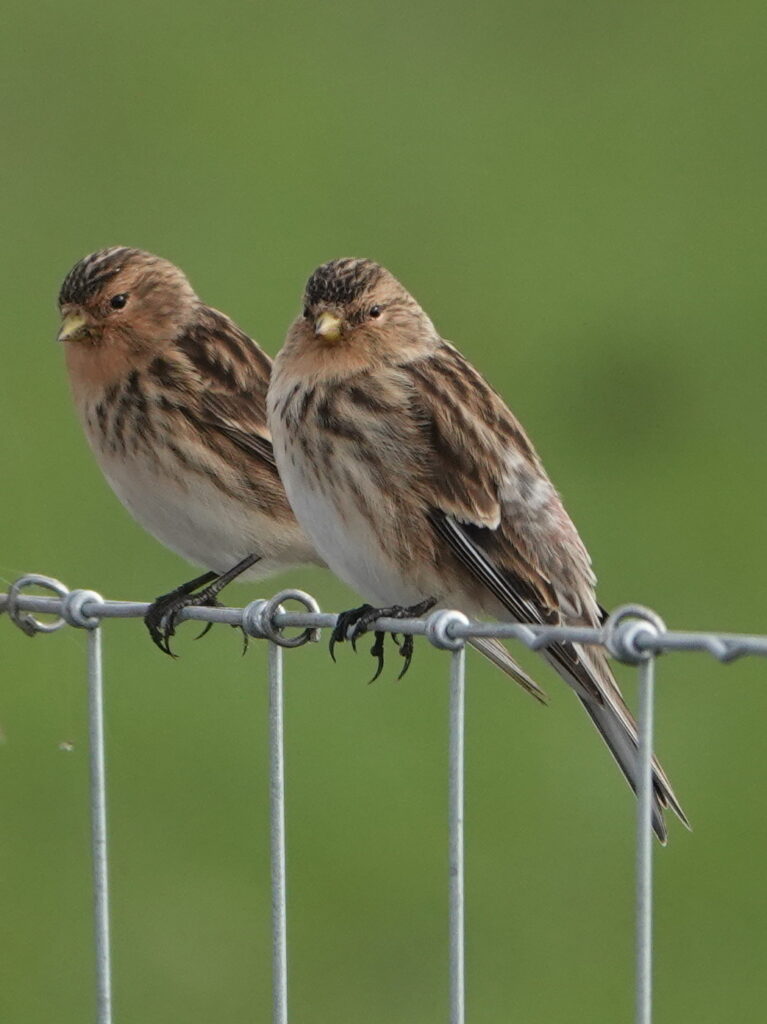
Distribution: Found in upland England, Wales and coastal Northern Ireland during summer months. East coast of England in winter. Widespread in Scotland.
Habitat: Moorlands, coastal saltmarshes, coastal crofts.
Size: Length: 14cm, Wingspan: 22–24cm
BoCC5 status: Red
What to look for: A small, streaky brown finch with a forked tail and a short bill. Twite have a brown back with dark streaking, a pale underside and streaking on the breast. During summer months the bill is grey, where it turns yellow for winter. A rich golden-brown face and upper breast are also present during winter months. Males are distinguished by a pink rump during summer.
Brambling (Fringilla montifringilla)
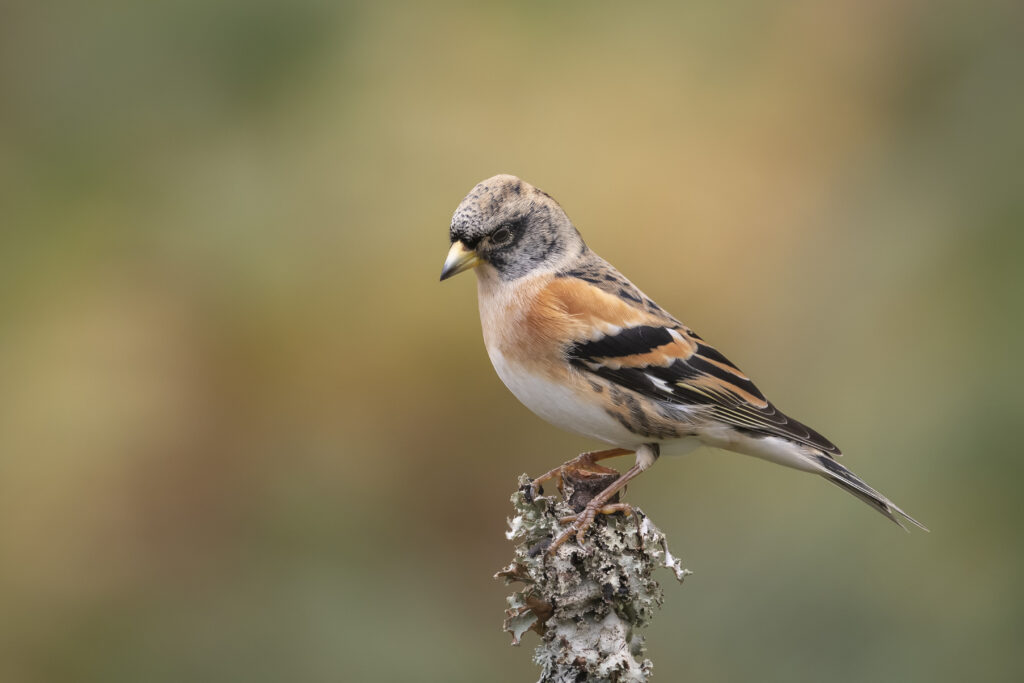
Distribution: Widespread in the UK during winter
Habitat: Beech woodlands, hedgerows, stubble fields, farmland and urban greenspaces.
Size: Length: 14cm, Wingspan: 26cm
BoCC5 status: Green
What to look for: A brightly marked winter visitor, Brambling are of similar size to a Chaffinch. They have a rust-orange hue over the breast and shoulder which is more vibrant and extensive among males. Males have a blue-grey head which transforms to a sleek black during summer breeding. During winter, they sport a flecked black and brown plumage, contrasting a white belly and rump. Wings are dark in colour with orange bars. Females have a softer orange breast than males, and a brown head with two pronounced dark lines running across the head and down the nape. When part of a larger flock, Brambling are recognisable for their white rump and a yellow bill during winter.

